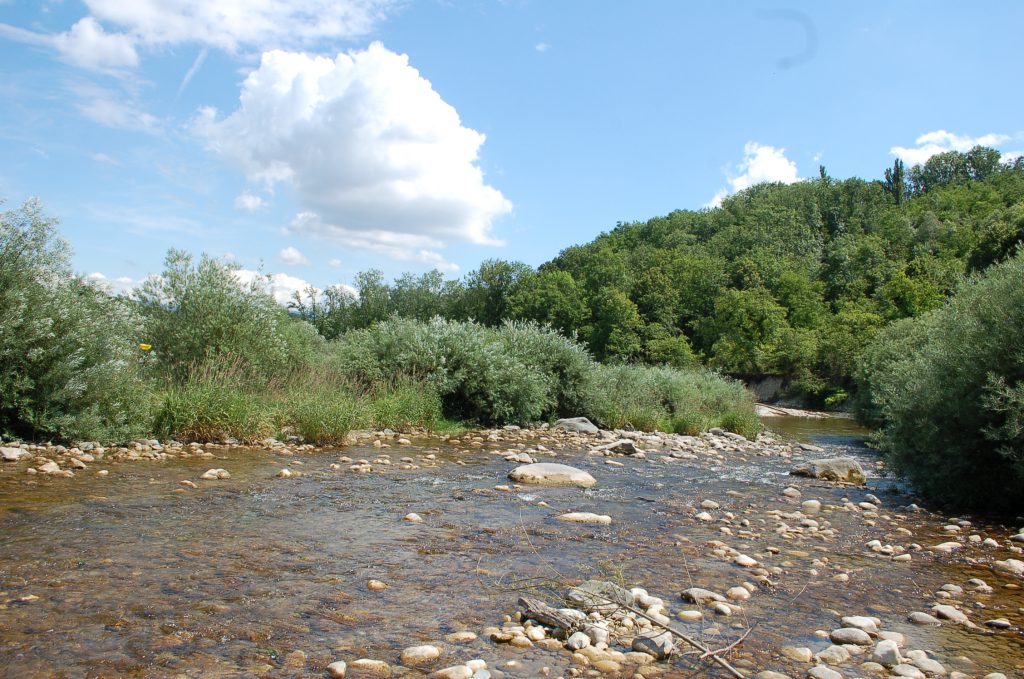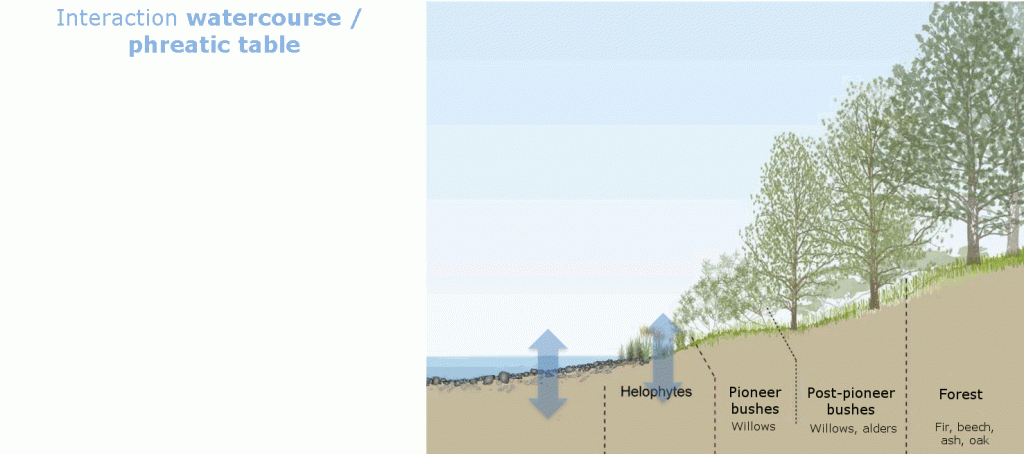Natural riparian environments are at the interface of aquatic and terrestrial ecosystems and are recognized for their high biodiversity, which is disproportionately high in relation to the area covered. This great diversity is explained in particular by their colonization by many organisms from adjacent areas, in addition to the very organisms specific to these environments. These fulfill a large number of important ecological functions and services:
- They provide food, shelter and breeding areas for wildlife (terrestrial and aquatic environments), and animal and plant circulation zones (ecological corridors).
- They play a role in shading and thermal regulation of water, which is directly related to the oxygen content of the water and limits the development of herbaceous plants in the river bed.
- They provide energy to the watercourse through litter and small animals.
- They act as filters by helping to retain suspended particles of runoff from riparian lands.
- They play a role in decontaminating water from the upstream catchment area, particularly with regard to nutrients and pesticides. They filter and partially purify the water coming from the upstream catchment area.
- They contribute to the protection of the banks against erosion by retaining the land with their root systems and by reducing water speed through friction near the banks.
- They modify the morphology of the river bed and fluvial dynamics, slowing floods and retaining obstructions.
They play a social role by providing different services (recreational, biomass production, etc.).
To elaborate
Decamps, H., (2002). Du bon usage des ripisylves. La Houille Blanche 3 49-53.
Naiman, R. J., H. Décamps and M. E. Mc Clain (2011). Riparia. Ecology, Conservation, and Management of Streamside Communities, Elsiever.
Piégay, H., Pautou, G., & Ruffinoni, C. (2003). Les forêts riveraines des cours d’eau: écologie, fonctions et gestion. Forêt privée française.
Wasson, J. G., Malavoi, J. R., Maridet, L., Souchon, Y., & Paulin, L. (1998). Impacts écologiques de la chenalisation des rivières. Cemagref Editions.



